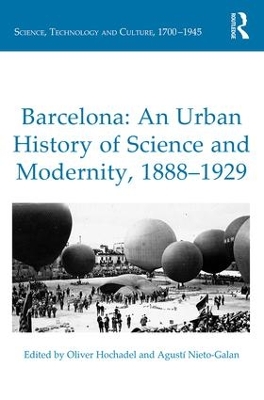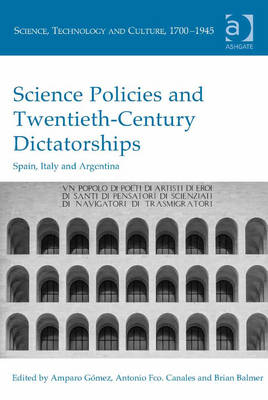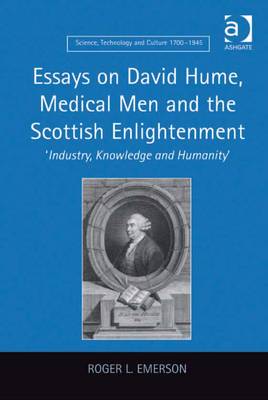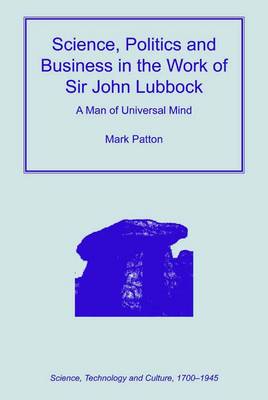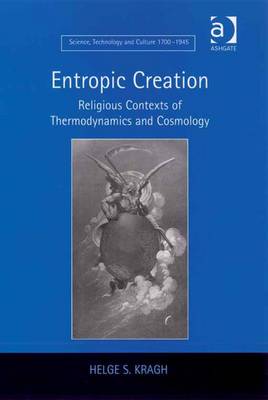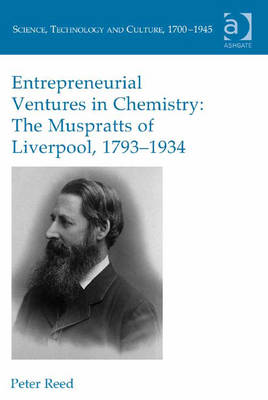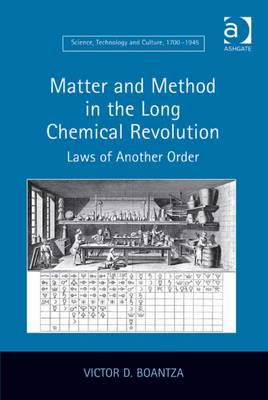Science, Technology and Culture, 1700-1945
7 total works
Barcelona: An Urban History of Science and Modernity, 1888-1929
by Dr Oliver Hochadel and Agusti Nieto-Galan
The four decades between the two Universal Exhibitions of 1888 and 1929 were formative in the creation of modern Barcelona. Architecture and art blossomed in the work of Antoni Gaudi and many others. At the same time, social unrest tore the city apart. Topics such as art nouveau and anarchism have attracted the attention of numerous historians. Yet the crucial role of science, technology and medicine in the cultural makeup of the city has been largely ignored. The ten articles of this book recover the richness and complexity of the scientific culture of end of the century Barcelona. The authors explore a broad range of topics: zoological gardens, natural history museums, amusement parks, new medical specialities, the scientific practices of anarchists and spiritists, the medical geography of the urban underworld, early mass media, domestic electricity and astronomical observatories. They pay attention to the agenda of the bourgeois elites but also to hitherto neglected actors: users of electric technologies and radio amateurs, patients in clinics and dispensaries, collectors and visitors of museums, working class audiences of public talks and female mediums. Science, technology and medicine served to exert social control but also to voice social critique. Barcelona: An urban history of science and modernity (1888-1929) shows that the city around 1900 was both a creator and facilitator of knowledge but also a space substantially transformed by the appropriation of this knowledge by its unruly citizens.
Science Policies and Twentieth-Century Dictatorships
Making a fresh contribution to the political history of science, this book explores the connections between the science policies of three countries that each experienced considerable political upheaval in the twentieth century: Spain, Italy and Argentina. By focussing on these three countries, the contributors are able to present case studies that highlight the characteristics and specificities of the democratic and dictatorial political processes involved in the production of science and technology. The focus on dictatorship presents the opportunity to expand our knowledge -beyond the more extensive literature about science in Nazi Germany and Stalinist USSR -about the level of political involvement of scientists in non-democratic contexts and to what extent they act as politicians in different contexts. Key topics covered include the new forms of organization and institutionalization of science in the twentieth century; the involvement of scientific communities in the governance of science and its institutions; the role of ideology in scientific development; the scientific practices adopted by scientific communities in different contexts; and the characteristics of science and technology produced in these contexts.
Essays on David Hume, Medical Men and the Scottish Enlightenment
by Roger L. Emerson
The Scottish Enlightenment was a period of intellectual and scientific progress, in a country previously considered to be marginal to the European intellectual scene. Yet the enlightenment was not about politeness or civic humanism, but something more basic - the making of an improved society which could compete in every way in a rapidly changing world.
David Hume, writing in 1752, commented that 'industry, knowledge and humanity are linked together by an indissoluble chain'. Collectively this volume of essays embraces many of the topics which Hume included under 'industry, knowledge and humanity': from the European Enlightenment and the Scots relation to it, to Scottish social history and its relation to religion, science and medicine. Overarching themes of what it meant to be enlightened in the eighteenth century are considered alongside more specific studies of notable figures of the period, such as Archibald Campbell, 3rd Duke of Argyll, and David Hume, and the training and number of Scottish medical students. Together, the volume provides an opportunity to step back and reconsider the Scottish Enlightenment in its broader context and to consider what new directions this field of study might take.
Science, Politics and Business in the Work of Sir John Lubbock
by Mark Patton
Sir John Lubbock (1834-1913), first Lord Avebury, was a leading figure in the scientific, political and economic world of Victorian Britain, and his life provides an illuminating case study into the ways that these different facets were interlinked during the nineteenth century. Born into a Kent banking family, Lubbock's education was greatly influenced by his neighbour, Charles Darwin, and after the publication of The Origin of Species, he was one of his most vocal supporters.
A pioneer of both entomology and archaeology and a successful author, Lubbock also ran the family bank from 1865 until his death in 1913, and served as a Liberal MP from 1870 until his ennoblement in 1900. In all these roles he proved extremely successful, but it is the inter-relations between science, politics and business that forms the core of this book. In particular it explores the way in which Lubbock acted as a link between the scientific worlds of Darwin, Huxley and Tyndall, the political world of Gladstone and Chamberlain and the business world of Edison and Carnegie. By tying these threads together this study shows the important role Lubbock played in defining and popularising the Victorian ideal of progress and its relationship to society, culture and Empire.
Entropic Creation is the first English-language book to consider the cultural and religious responses to the second law of thermodynamics, from around 1860 to 1920. According to the second law of thermodynamics, as formulated by the German physicist Rudolf Clausius, the entropy of any closed system will inevitably increase in time, meaning that the system will decay and eventually end in a dead state of equilibrium. Application of the law to the entire universe, first proposed in the 1850s, led to the prediction of a future 'heat death', where all life has ceased and all organization dissolved. In the late 1860s it was pointed out that, as a consequence of the heat death scenario, the universe can have existed only for a finite period of time. According to the 'entropic creation argument', thermodynamics warrants the conclusion that the world once begun or was created. It is these two scenarios, allegedly consequences of the science of thermodynamics, which form the core of this book.
The heat death and the claim of cosmic creation were widely discussed in the period 1870 to 1920, with participants in the debate including European scientists, intellectuals and social critics, among them the physicist William Thomson and the communist thinker Friedrich Engels. One reason for the passion of the debate was that some authors used the law of entropy increase to argue for a divine creation of the world. Consequently, the second law of thermodynamics became highly controversial. In Germany in particular, materialists and positivists engaged in battle with Christian - mostly Catholic - scholars over the cosmological consequences of thermodynamics.
This heated debate, which is today largely forgotten, is reconstructed and examined in detail in this book, bringing into focus key themes on the interactions between cosmology, physics, religion and ideology, and the public way in which these topics were discussed in the latter half of the nineteenth and the first years of the twentieth century.
Entrepreneurial Ventures in Chemistry: The Muspratts of Liverpool, 1793-1934
by Dr. Peter Reed
The Muspratt family form a fascinating dynasty in the history of British commerce and manufacturing. Associated principally with the development of the chemical industry in Liverpool - James Muspratt (1793-1884) was the first person to make alkali on a large scale using the Leblanc Process - the three generations of the family also contributed to wider Victorian and Edwardian culture through their interests in politics, education (founding the Liverpool College of Chemistry in 1848), art, literature and theatre. This is the first study to present the history of the Muspratts as a family group and to consider the entrepreneurial spirit they brought to chemical manufacture in Britain and to their many other ventures.
The seventeenth-century scientific revolution and the eighteenth-century chemical revolution are rarely considered together, either in general histories of science or in more specific surveys of early modern science or chemistry. This tendency arises from the long-held view that the rise of modern physics and the emergence of modern chemistry comprise two distinct and unconnected episodes in the history of science. Although chemistry was deeply transformed during and between both revolutions, the scientific revolution is traditionally associated with the physical and mathematical sciences whereas modern chemistry is seen as the exclusive product of the chemical revolution. This historiographical tension, between similarity in `form' and disparity in historical `content' of the two events, has tainted the way we understand the rise of modern chemistry as an integral part of the advent of modern science.
Against this background, Matter and Method in the Long Chemical Revolution examines the role of and effects on chemistry of both revolutions in parallel, using chemistry during the chemical revolution to illuminate chemistry during the scientific revolution, and vice versa. Focusing on the crises and conflicts of early modern chemistry (and their retrospectively labeled `losing' parties), the author traces patterns of continuity in matter theory and experimental method from Boyle to Lavoisier, and reevaluates the disciplinary relationships between chemists, mechanists, and Newtonians in France, England, and Scotland.
Adopting a unique approach to the study of the scientific and chemical revolutions, and to early modern chemical thought and practice in particular, the author challenges the standard revolution-centered history of early modern science, and reinterprets the rise of chemistry as an independent discipline in the long eighteenth century.
